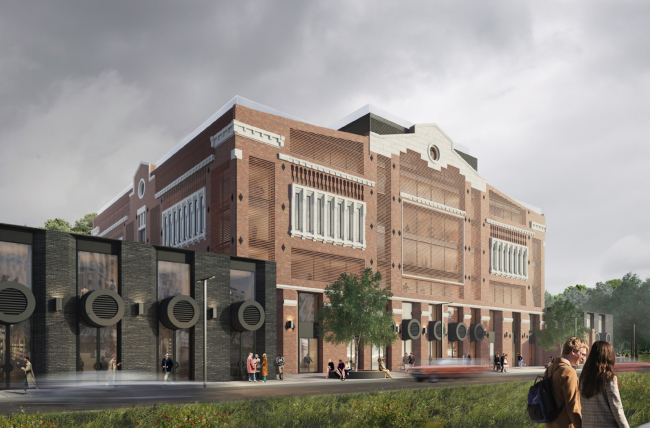|
Published on Archi.ru (https://archi.ru) |
|
| 30.04.2021 | |
|
This Beetle Has Flown |
|
|
Julia Tarabarina |
|
| Architect: | |
| Sergey Nikeshkin | |
| Studio: | |
| KPLN | |
|
The story of designing a business center in the Zhukov (“Beetle”) Drive: a number of attempts to preserve a hundred-year-old cold storage facility, at the same time introducing modern buildings interpreting the industrial theme. The project remained on paper, but the story behind it seems to be worth our attention. The Beetle office center was designed by KPLN (headed by Sergey Nikeshkin) during a two-year span, in 2019-2020, commissioned by Coldy. The project went through a few stages, three of which had to do with the dilemma of whether to preserve or tear down the “refrigerator” – a brick industrial structure built in the beginning of the XX century. And, if to preserve, then in which format. The building of the “refrigerator” when the design process began. The Beetle office center. A photograph. The west facadeCopyright: © KPLNThe land site stretches along the Zhukov Drive between the Paveletskaya railroad lines and the Derbenevskaya Street; narrow in its east part, it is almost square in the west, where the “refrigerator” is located. Originally, the project of the business center consisted of two parts: the renovation of the “refrigerator” (according to the 2000 data), which was to become the first stage, and the construction of new office buildings, which was to become the second one. The Beetle office center. Outlines of the land siteCopyright: © KPLNThe building of the early XX century The “refrigerator” – a large parallelepiped with a 40x45 meter base and an elevation of the central axis decorated by frontons – was almost completely devoid of windows because they violate the thermal insulation necessary for uniform cooling, which was achieved here through the circulation of air between the floors. The only place that was lit by natural light was the staircase of the main entrance underneath the turret on the west facade, but the entire building was decorated in the spirit of “industrial romanticism”: imitations of windows with bulging fascias, balusters, and cantilevers – all these things visually divided the volume into elements organized in a symmetrical composition, successfully combating the inertia of form. Later on, the stained-glass window of the staircase was stopped with bricks, and several sloppy windows pierced over the decor. The brick facades right on top of the masonry were covered with yellow heat-insulating foam that looked like lichen from a distance. The building of the “refrigerator” when the design process began. The Beetle office center. A photograph. The north facadeCopyright: © KPLNAccording to the Arkhnadzor records, the building in the Zhukov Drive was built back in the day by the joint-stock company “Astrakhansky Kholodilnik” (“Astrakhan Refrigerator”). The construction probably began in 1915-1916, when the company bought the land, but was apparently finished after the Great October Socialist Revolution (when no private property was allowed). Meanwhile, it must be noted that this was not the only cold storage building in the Paveletskaya industrial park: to a certain extent, the architecture of this brick building echoes that of another brick hangar, situated 400 meters to the north at the address of 41c4, Dubininskaya Street (Alexander Frolov, the author of the application for giving this building a status of an architectural heritage site, dated this neighboring refrigerator to 1905–1912 and even, with some probability, attributed it to the master of Northern Art Nouveau Fyodor Fyodorovich von Postels; more about the preservation project, see here). Reconstruction: Version 1 The first of the reconstruction versions proposed by the KPLN architects was the most non-invasive in relation to the building of the early XX century, which, according to the project, had to change its function altogether. Due to the fact that a cold storage facility does not need any windows at all, but with an office center it’s the other way around, the architects proposed to make wide openings in the walls, at the same time covering them up with striped ceramic lattices. When viewed from a distance, the volume would look solid and retain the semblance of its former monumental self. It was expected that all the details (light-colored against the brick background) would be repaired and restored , while the rows of vertical recessions would be further drilled and turned into real windows. The Beetle office center. Phase 1, Stage 1Copyright: © KPLNThe Beetle office center. Phase 1, Stage 1Copyright: © KPLNThe expanded underground tier contains an underground parking garage, while the low-ride volumes of the public spaces, which replaced the later-on Soviet additions of the ice-cream factory, are emphasized by the architects in a deliberately brutal way: with black facades and protruding round “chimneys”. 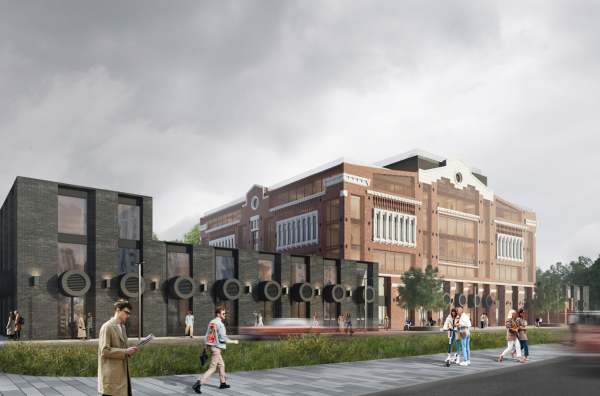 The Beetle office center. Phase 1, Stage 1Copyright: © KPLN The Beetle office center. Phase 1, Stage 1Copyright: © KPLN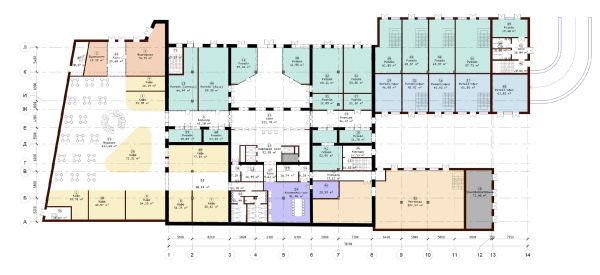 The Beetle office center. Phase 1, Stage 1. Plan at +0.000 elevationCopyright: © KPLN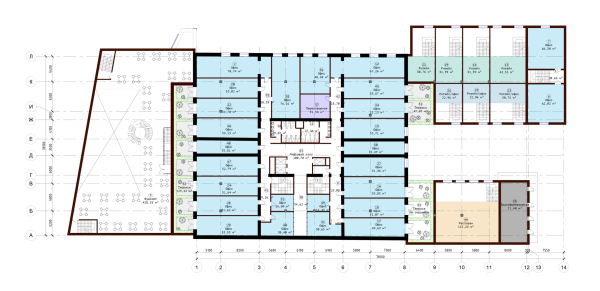 The Beetle office center. Phase 1, Stage 1. Plan at +3.900 elevationCopyright: © KPLN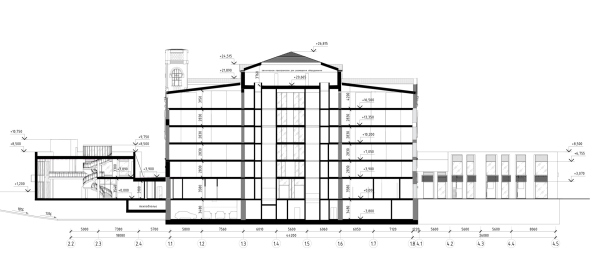 The Beetle office center. Phase 2. Section 2-2Copyright: © KPLN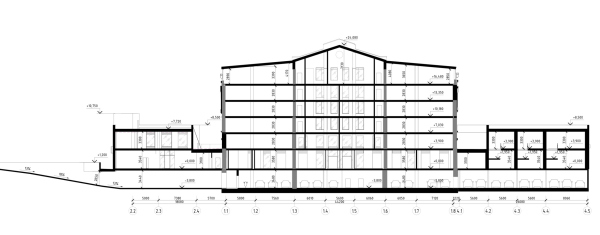 The Beetle office center. Phase 2. Section 1-1Copyright: © KPLN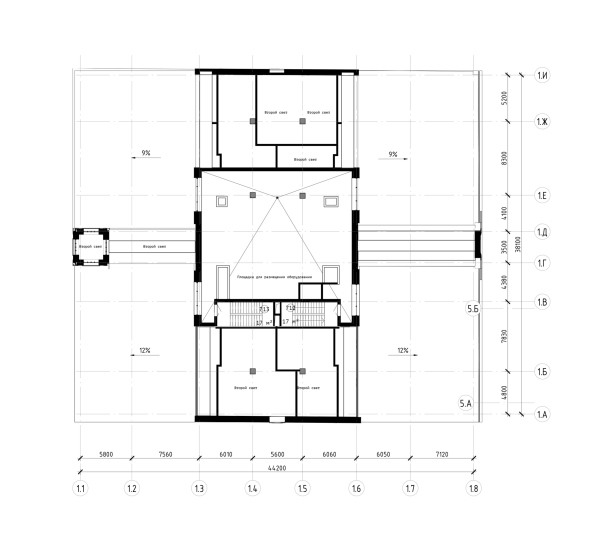 The Beetle office center. Stage 2. Plan of the site for placing the equipment at +19.650 elevationCopyright: © KPLN The Beetle office center. Stage 2. Plan of the 4th floor at +10.200 elevationCopyright: © KPLN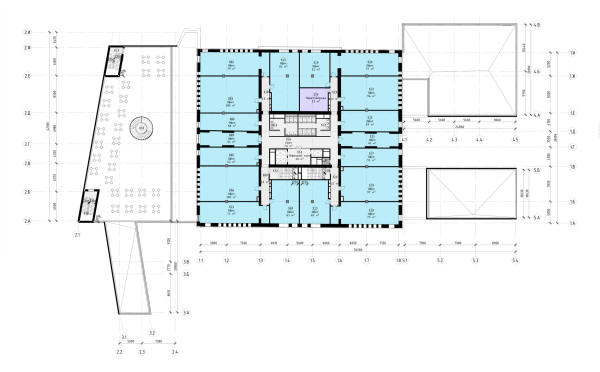 The Beetle office center. Stage 2. Plan of the 3rd floor at +7.050 elevationCopyright: © KPLN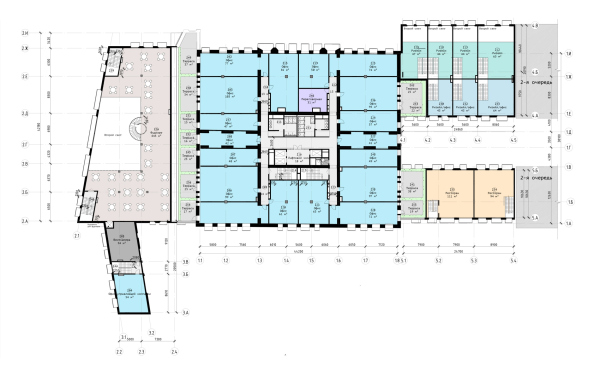 The Beetle office center. Stage 2. Plan of the 2nd floor at +3.900 elevationCopyright: © KPLN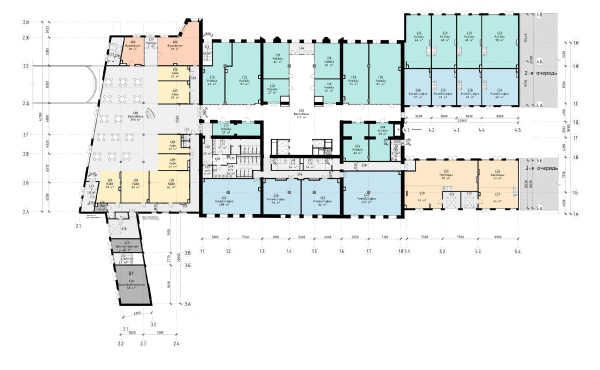 The Beetle office center. Stage 2. Plan of the 2nd floor at 0.000 elevationCopyright: © KPLN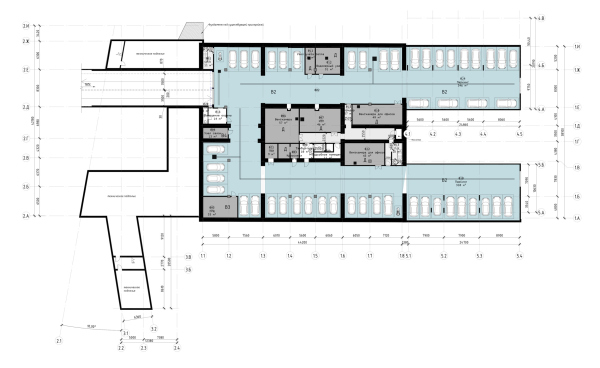 The Beetle office center. Stage 2. Plan of the -1st floor at -3.800 elevationCopyright: © KPLNNew buildings: Version 1, Stage 2 The new office buildings of the Beetle were to be placed in the narrow eastern part, along the driveway, east of the “fridge”. The reconstruction was to be Stage 1, new construction Stage 2 of the project. For the new buildings, in 2019 the developer organized a closed-door competition that involved DNK ag, Ostozhenka, and a few other established architectural companies. The concept proposed by KPLN won the competition, and later on preserved its imagery at all of the stages while the company still participated in the project.  The Beetle office center. Phase 1, Stage 2. The competition project, a modelCopyright: © KPLN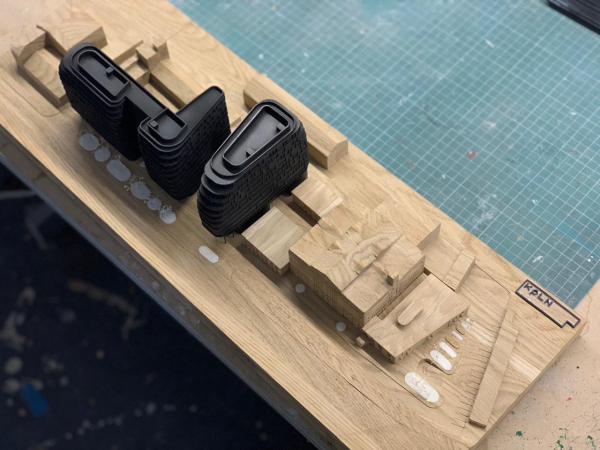 The Beetle office center. Phase 1, Stage 2. The competition project, a modelCopyright: © KPLN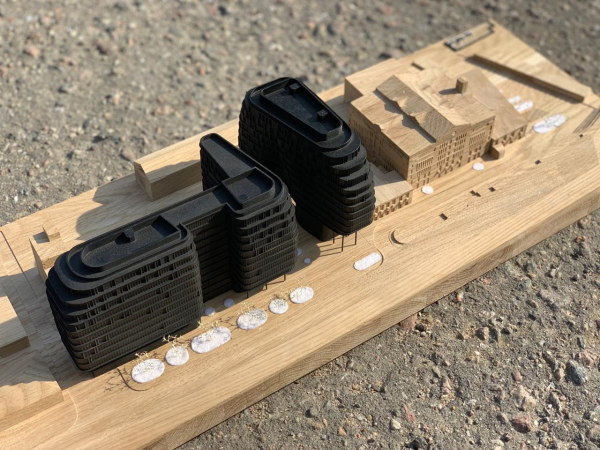 The Beetle office center. Phase 1, Stage 1. The competition project, a modelCopyright: © KPLNSo! The streamlined pitch-black volumes are composed of flexible floor-by-floor bands, receding at the top and bottom: in the first case, this vacates room for the terraces, which smoothly rise towards an operated roof; in the second case, this vacates room for the sidewalks and the land improvement. Interestingly, in the opening of the traversal pedestrian “park” street, the cantilevers were supported by slender metallic columns. At the same time, the recessions of the terraces delicately concealed the height: when viewed from a distance, the top floors are no different than the rest, and, when viewed from a close range, they are invisible, and the height of the street looks smaller than it really is. The Beetle office center. Phase 3, Stage 2Copyright: © KPLNAs is the custom with office buildings, there is lots of glass here, even though, in spite of the rounded contours of the volumes, the architects did not plan to use curvilinear glass extensively, and the jagged outline of the top floors looked like some glass angle protractor, making turns in the corners within guidelines. The distribution of glass on the facades depends upon isolation – in the north parts, where there is less light, the stained glass windows are more abundant. The Beetle office center. Phase 5. The insolationCopyright: © KPLNThe inter-floor bands are of black metal, the occasional verticals are of dark ceramics, laid with overlaps and looking like medieval black-glazed roof tiles. All these things work together to create an impression partially “geologic” (because the bands of the floors stand out and stand back like some slate formation), and partially industrial, which reads like a logical contextual reference to the history of this place. In general, the buildings look like a mechanism, some kind of conveyor unit, but at the same time they shine, both in the sun and with internal illumination – so this is definitely some kind of post-industrial conveyor, not devoid of glamor combined with a bit of actual brutality. The impression is further supported by the winter 3D renders – but then again, according to the architects, it was the client that chose this season: “because we have winter 2/3 of the year here.” The Beetle office center. Phase 3. Visualization from the Zhukov DriveCopyright: © KPLNThe flowing outlines of the volumes were something that the architects resorted to due to the specifics of the land site – Sergey Nikeshkin shares. On the grounds of the complex, there are two round wells of deep sewerage, with a diameter of about 6m. Since moving them to another place was out of the question, the wells had to be bypassed, and this is how the idea of a stepped cantilever indentation arose. Above the wells, the architects conceived round fountains with a thin layer of recirculated water. In this particular instance, the bypasses of the well are shown on the example of the fifth and last version of the project, where the new buildings occupy the entire land site but the morphology of the buildings inherits the principles of the 1st version of Stage 2: 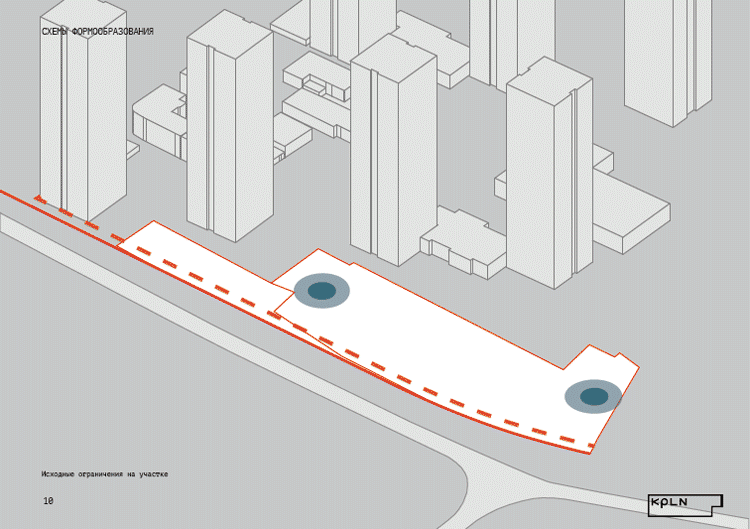 The Beetle office center. Phase 5 (in which the new construction occupies the whole of the land site). The north facadeCopyright: © KPLNThe black-glass, streamlined and faceted, from a distance somewhat “pot-bellied” buildings, in addition to the obvious “industrial” imagery, may also seem to be an interpretation of the romantic and at the same time contextual name of “Beetle”. The glass elements on the corners are like transparent wings, the black frames are like chitinous flaps, and the evening glow reminds of fireflies. The comparison is not literal, of course, but the resemblance is there, as if a giant metallic transformer beetle landed next to the old brick hangar. The architects interpreted this proximity as a contrast between the old and the new: the cold storage is half the height of the new buildings, it is all brick with white details, whilst the new office buildings are black, glass, and streamlined.  The Beetle office center. Phase 5. The north facadeCopyright: © KPLN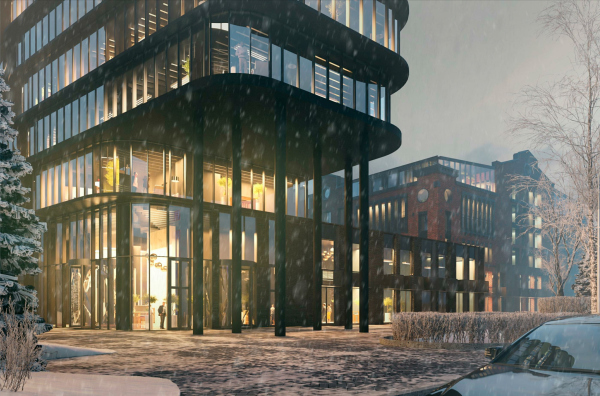 The Beetle office center. Stage 3, Phase 5. The entrance groupCopyright: © KPLN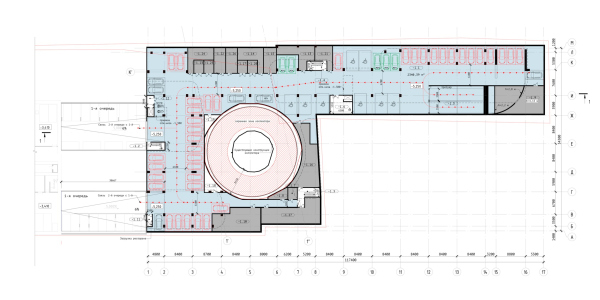 The Beetle office center. Phase 3. The car parkCopyright: © KPLN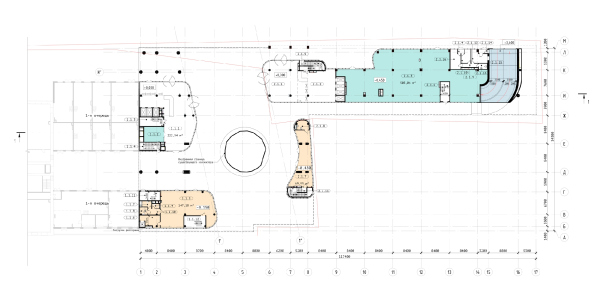 The Beetle office center. Phase 3. Plan of the 1st floor at 0,000 elevationCopyright: © KPLN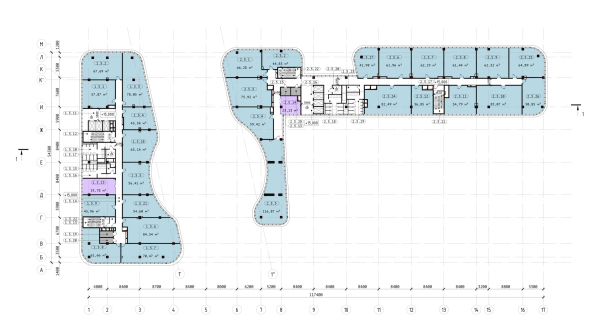 The Beetle office center. Phase 3. Plan of the 5th floor at +15,000 elevationCopyright: © KPLN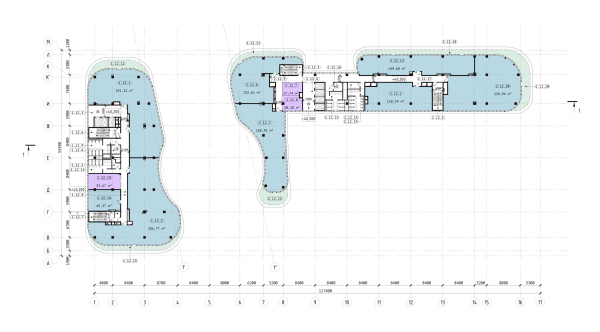 The Beetle office center. Phase 3. Plan of the 12th floor at +40,500 elevationCopyright: © KPLN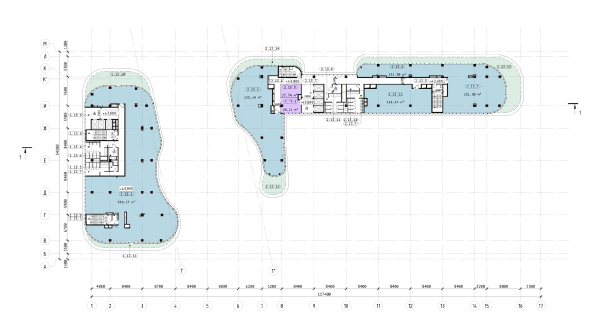 The Beetle office center. Phase 3. Plan of the 13th floor at +43,800 elevationCopyright: © KPLN The Beetle office center. Phase 3. The roof planCopyright: © KPLN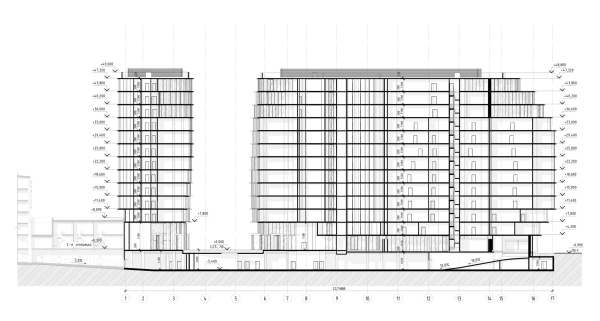 The Beetle office center. Phase 3. Section 1-1Copyright: © KPLN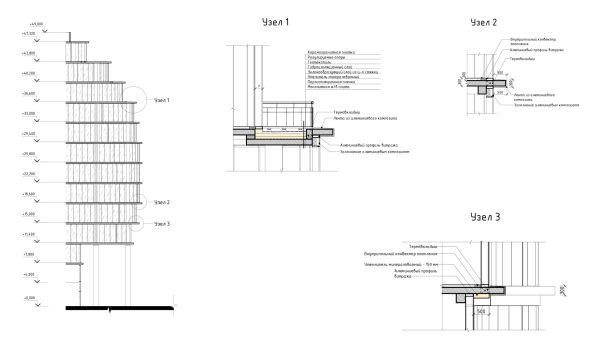 The Beetle office center. Phase 3. The hubsCopyright: © KPLNReconstruction: Version 2 In the second version of the reconstruction project, the details of the refrigerator turned black, and the refrigerator itself grew larger – both was done at the client’s request, the former for the sake of harmony with the modern buildings, the latter for the bigger output of useful floor space, extended in the top floor with a glass mansard. The lattices, proposed by the architects for concealing the windows, were also declined by the client: the windows became just windows. However, the building, although it lost a significant part of the similarity with the historical prototype due to its new function, was still supposed to be preserved in February 2020. 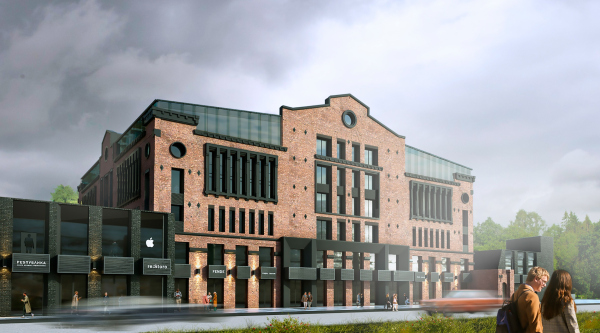 The Beetle office center. Phase 2. Visualization of the north facadeCopyright: © KPLN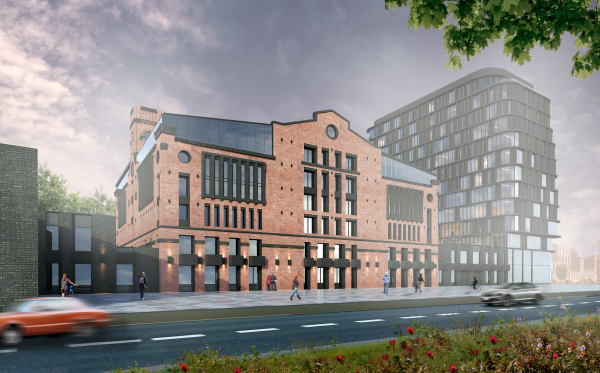 The Beetle office center. Phase 2. Visualization of the south facadeCopyright: © KPLN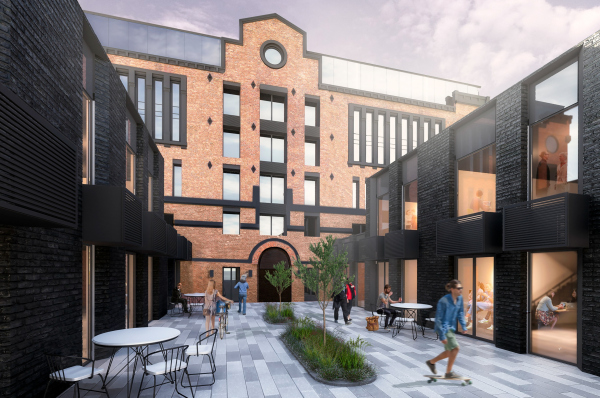 The Beetle office center. Stage 2. Visualization of the east facadeCopyright: © KPLN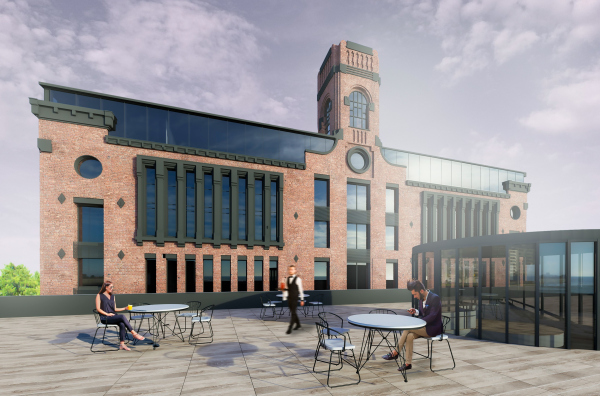 The Beetle office center. Stage 2. Visualization of the west facadeCopyright: © KPLN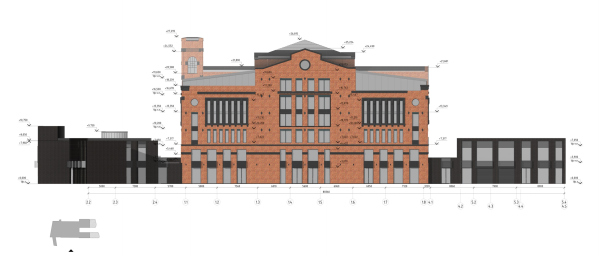 The Beetle office center. Stage 2. The south facadeCopyright: © KPLN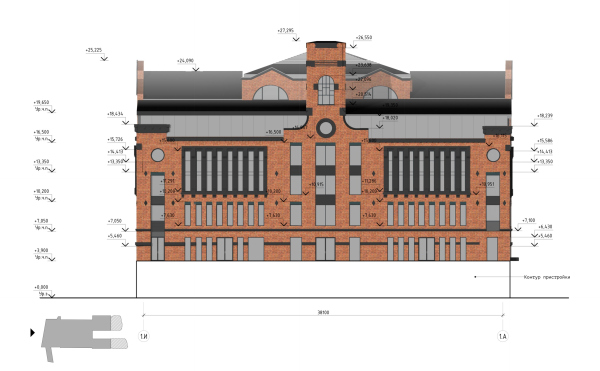 The Beetle office center. Stage 2. The west facadeCopyright: © KPLN The Beetle office center. Stage 2. The north facadeCopyright: © KPLN The Beetle office center. Phase 2. A simplified master planCopyright: © KPLNThe final version In the first half of 2020, the developer asked KPLN to propose an option without preservation of the refrigerator building: it consisted of new buildings with an already specified morphology spread all over the site. 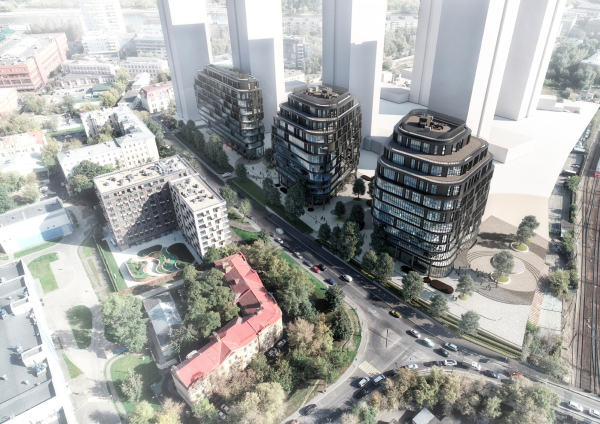 The Beetle office center. Phase 1Copyright: © KPLN The Beetle office center. Phase 5Copyright: © KPLN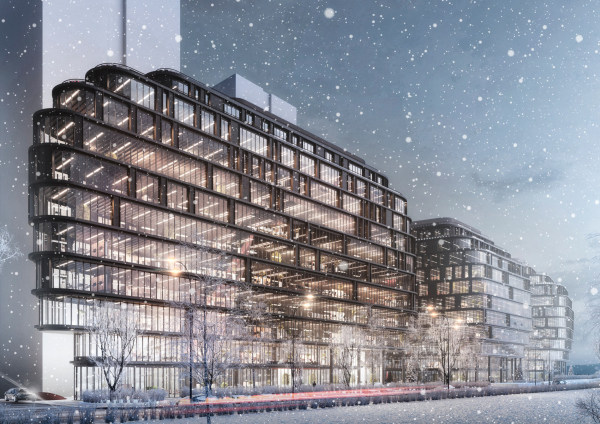 The Beetle office center. Phase 5Copyright: © KPLN The Beetle office center. Phase 5. Plan of the 6th floor, Building 1Copyright: © KPLN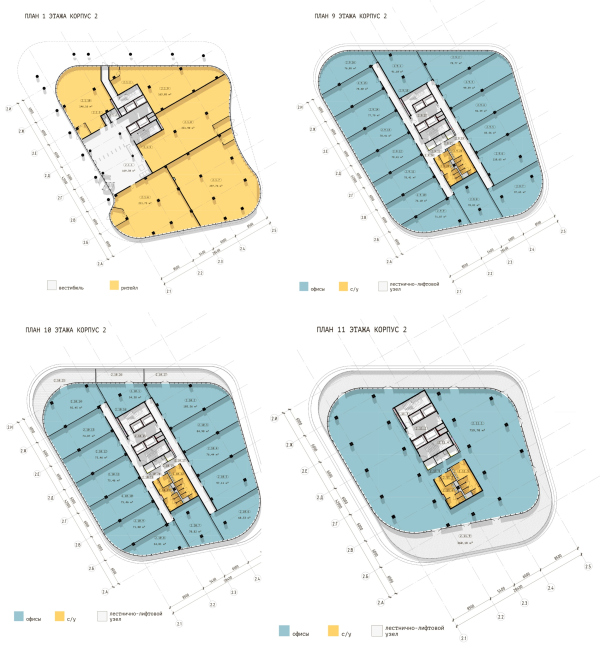 The Beetle office center. Phase 5.Copyright: © KPLN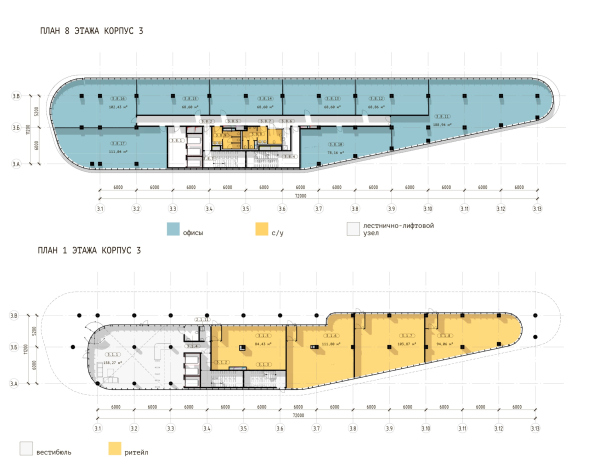 The Beetle office center. Phase 5.Copyright: © KPLN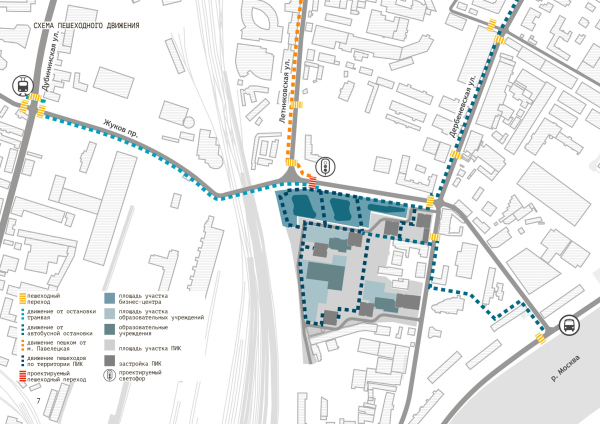 The Beetle office center. Phase 5. The pedestrian flowsCopyright: © KPLNAt this point, the participation of KPLN in the project came to an end – then two completely different concepts came about, called not Beetle but Taller. One of the projects, announced in the summer of 2020, is called Taller Loft, and is already positioned as a housing complex, or, to be more exact, a mixed-use development, combining apartments and offices. The developer did not disclose the authors of the new project, explaining that “Taller Loft is not yet on sale”. For all intents and purposes, the new project appeared in summer, while the demolition of the “refrigerator” began in October: on November 10, the Department of Cultural Heritage refused the building its protected status, on November 16, an article by Arkhnadzor was published, then, a week later a few articles to the opposite effect appeared (here, here, and here). Still another project, which, most likely, appeared recently, is now featured on developer’s website – in the form of two office prisms, combining brick verticals with prevalent glass; what it inherits from the fridge is the tower before the west facade – one can hardly tell if it is preserved or (which is more probable) reconstructed. *** One should say that the transformations of the Beetle project fit into many modern trends; they can even be interpreted as a kind of guideline for step-by-step development: first, maximum preservation, then compromise preservation, then modern construction, then a new project combined with housing. In a sense, this story repeats on a miniature scale the story of developing the Paveletskaya industrial estate: a while ago, it was the territory of new offices and redevelopments of old factories. During the early days of turning unused factory buildings into offices, they even had guided tours here. Over the recent years, the prevailing typology of new projects shifted in the “housing” direction, and the scale became huge. South of the southern border of the Beetle business center, which was once owned by the German chemical factory Fabwerke, PIK development is building a high-rise housing complex, while three hundred meters to the north, on the Letnikovskaya Street, a large-scale housing complex for Pioneer Development is being built. The history of designing the Beetle business center – from “loft” redevelopment with preserving the historical building to completely new construction with a small share (we do not know exactly how big) of the housing typology – generally repeats the trends inherent to this industrial park on the whole. One must say that cold storage facilities are not really lucky in terms of reconstruction – probably because they are not just workshops but buildings without windows that require quite a lot of work to change their function. The necessity for punching windows in the walls radically transforms them, hence, questioning the very necessity of preservation: because we either preserve it as it is because its a piece of architectural heritage, or, if we can drill holes in it, we cannot give the building a protected status. Nevertheless, the design experience itself, including an attempt to preserve not only parts of the walls and the volume, but also, especially in the first version, the image of a building from the beginning of the XX century arouses interest and respect. However, the task was very complex, not in the least because of the market conditions. Hence, it comes as no surprise that the beetle flew away from the Beetle Drive. |
|



